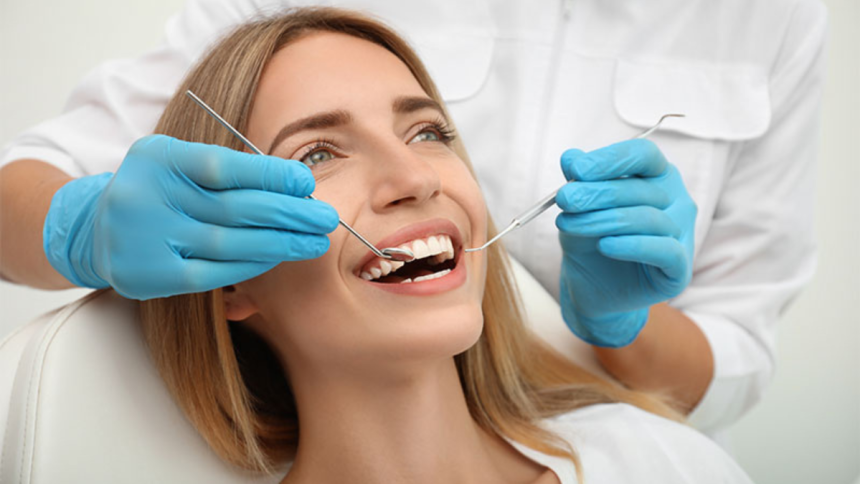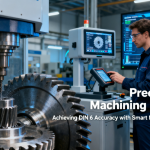Let’s be honest, metal braces had their time, and it was the same era we all thought frosted tips looked good. Now, clear aligners are out here doing the heavy lifting without the constant cuts inside your cheeks or the world knowing about it every time you smile. They’ve come a long way, too. Newer systems use softer, high-grade polymers that move teeth efficiently while making it easy to live your life without hiding every grin behind your hand. You don’t have to pause your social life just to straighten your teeth, and you can actually brush and floss like a normal person instead of using those tiny tools that feel like they’re from a dollhouse. Plus, the digital scanning tech is so precise now, your aligners are made to fit your teeth like a tailored suit, not like the old trays that felt like shoving your teeth into an ice cube mold.
Implants That Are Actually Worth It Now
Dental implants used to be something people only got if they had no other options, and let’s just say early implants had about as much subtlety as a face tattoo. Now? It’s a different game. Implants are built with advanced biocompatible materials, and the way they fuse with your bone makes them feel like your own teeth, not like a chunky substitute you have to baby. You can chew steak, bite into an apple, and forget you even have them. The tech that plans and places implants has gotten so precise that healing times are shorter, and the aesthetics are genuinely good enough that no one will clock them at a glance. Your dentist can match the shade and shape to your natural teeth so well it’ll make you wonder why you put off that consultation for so long. Plus, let’s not pretend longevity doesn’t matter here. If you take care of dental implants, you’ll keep them for decades, and your future self will thank you when your molars aren’t bailing on you by the time you’re fifty-five.
No More Cringe-Worthy Goop Impressions
If you’ve ever gagged your way through those thick, cold trays that feel like you’re biting into a wad of concrete mixed with mint, you’re going to appreciate digital impressions. The wand-style scanners map your mouth in minutes, creating a precise 3D model that your dentist can use for crowns, bridges, or aligners without you drooling in a chair for forty-five minutes. The fit from these scans is way more accurate, so your crowns won’t feel like someone parked a minivan on your molar, and your aligners will feel less like torture devices and more like a snug hug for your teeth. These scans also let dentists spot small issues before they snowball, and they can track subtle shifts in your teeth over time to head off problems early. It’s one of those innovations that quietly makes everything about dental visits less miserable. And if you’re exploring smile design, for example, SmileSet helps you test out your potential new smile digitally so you can see the vibe before committing.
Lasers Are Doing The Dirty Work Now
Lasers have moved from sci-fi to your dentist’s toolkit, and they’re not there for show. They can clean out bacteria in gum pockets with precision that old scraping tools can’t match, and they can shape soft tissue for aesthetics or prep a tooth with far less discomfort. If you’re dealing with a gum procedure, lasers mean less bleeding, less swelling, and faster healing. They can also help zap away small cavities without the high-pitched whine of a drill, which is a blessing if that sound alone raises your blood pressure. Lasers are also making whitening treatments gentler while still getting your teeth a few shades brighter. Instead of blasting your enamel with harsh chemicals, the laser tech speeds up the whitening process, reducing sensitivity while still delivering solid results without you spending your whole lunch break in a dentist’s chair.
Smart Tech That Keeps You Out Of The Chair
You don’t need your dentist to be the only one monitoring your teeth anymore. There are smart toothbrushes that track your brushing habits and alert you if you’re slacking or missing areas, and some even give your dentist updates so you can skip the awkward “so, you haven’t been flossing” chat. Intraoral cameras let dentists spot tiny cracks or early decay before they become a saga. Pair that with AI diagnostic tools that analyze your X-rays in seconds, and you’re getting a level of monitoring that can keep small problems from turning into big, expensive ones. Smart dental tools at home help you catch plaque buildup, track gum recession, and keep you aware of your actual oral health, not just what you hope is happening while you brush for fifteen seconds before bed. It’s prevention without the guesswork, and it keeps you from that mid-year surprise bill when your dentist finds a problem you had no idea was brewing.
The Wrap Up
We’ve all got enough on our plates, and dealing with preventable dental problems shouldn’t be one of them. Dental technology has moved past the medieval vibes of drills and metal braces, and it’s not just about looks. It’s about comfort, longevity, and having one less thing to worry about while you live your life. If you’ve been putting off a checkup or are stuck with outdated solutions, it might be time to see what’s actually possible now. Your teeth deserve better. So do you.
Lynn Martelli is an editor at Readability. She received her MFA in Creative Writing from Antioch University and has worked as an editor for over 10 years. Lynn has edited a wide variety of books, including fiction, non-fiction, memoirs, and more. In her free time, Lynn enjoys reading, writing, and spending time with her family and friends.















